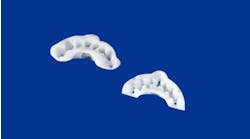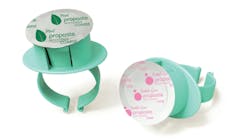Dear Dianne,
I have a hygienist that has been working in my office for nearly a year. She is very conscientious and dedicated to her work, but the problem is that she hurts people.
Several patients have complained to me about their uncomfortable hygiene visit. My previous hygienist was with me for 20 years, and I don't recall one patient ever complaining about her causing pain.
This situation is a matter of concern to me, and I do not want people to leave my practice because of pain in the hygiene chair. How is the best way to deal with this situation? Do you have any tips to offer?
Concerned Doc
Dear Concerned,
The one thing we know for sure is this: people do not like to go to the dentist! Nearly 40 million people avoid the dentist, according to Dr. James K. Bahcall, a Chicago-based endodontist and author of “Smile for Life: A Guide to Overcoming Your Fear of the Dentist” (Avalon Lane Publishing). Pain is the most often cited reason. In a 2003 survey conducted by the American Dental Association, more than 21% of people cited “fear of pain” as their reason why they avoid routine care.
People that are “phobic” about going to the dentist have an expectation of pain. They know dental procedures involve needles and sharp, scary-looking tools. I tell my audiences all the time that if clinicians hurt patients, especially on the first visit, they are living down to the patient's expectations, and the patient will have an even more difficult time returning. This issue of pain in the dental office is responsible for many broken/cancelled appointments.
If a patient has a healthy periodontium, preventive care should not cause pain. Yet some clinicians develop heavy-handed instrumentation techniques that tear the epithelial attachment and sulcular epithelium in the process of debridement. Periodontal probing can also cause pain if the clinician uses excessive pressure with the probe. A study by Garnick and Silverstein (Journal of Periodontology, January 2000) demonstrated that probe force can cause the probe to penetrate the junctional epithelium, especially if the patient has periodontal disease. Ouch!
Most likely, your hygienist is not aware that she is being unduly rough. I do not believe hygienists “like” to cause pain but rather accept the fact that it is sometimes necessary to get the job done.
However, if five patients relate a problem to you, you can bet many more feel the same way but just have not expressed the problem to you. Sometimes people find it easier to go elsewhere for care rather than vocalize their issues with either you or a staff member.
First, I would advise you to experience her care firsthand by being her patient. You may be able to ascertain why patients are complaining.
Second, it is imperative that you speak with your hygienist about this problem. I would approach it privately by using real examples. “Carol, there's something we need to discuss and work out before it becomes a big negative to us. Over the past few months, several patients have voiced to me that their preventive care was painful. These are patients that have not had issues in the past. Tell me, have you noticed this becoming a problem? When a patient expresses pain, what do you do?” This gives your hygienist a chance to speak. It is hoped she will accept the discussion as an opportunity to improve her treatment. After all, how can she improve if she does not know there is a problem?
Next, please make available any number of alternatives for short-term anesthesia, such as Oraqix® (Dentsply), HurriPAK® (Beutlich), or UltraCare® (UltraDent). These anesthetics can be squirted into the sulcus to give short-term anesthesia in tender tissues. Make your hygienist aware that patient comfort is important to you, and you want to do everything you can to help her have the same goal.
Years ago, I took a position in an office when the previous hygienist relocated to a different city. Patients made comments such as, “You didn't hurt me like the other hygienist.” One patient told me that he got so tired of “having my gums ripped to shreds” that he decided to go to another practice. Imagine his shock when the same hygienist summoned him to the treatment area in the second practice — he did not know she worked two days per week in that practice as well! He called her “the old blood and guts hygienist.”
People with inflamed tissues are more likely to experience pain than healthy patients. Make sure your hygienist is using local anesthesia appropriately when scaling periodontal patients. If your state does not allow hygienists to administer anesthesia, show her your willingness to provide that service for any patient who needs it. I mention this because I have observed hygienists trying to perform periodontal scaling without anesthesia, usually because they do not want to waste time waiting on the doctor to come and deliver the anesthetic. If your hygienist can administer anesthesia, make sure she is using the proper low-pain technique in delivery.
Once you make her aware there is a problem, it is up to her to make the necessary adjustments. Set a time to meet again in one month to assess progress toward resolution. Make sure to keep track of any further patient complaints. The goal would be zero patient complaints.
Best wishes,
Dianne
About the Author
Dianne Glasscoe-Watterson, RDH, BS, is a professional speaker, writer, and consultant to dental practices across the United States. She is CEO of Professional Dental Management, based in Frederick, Md. To contact Glasscoe-Watterson for speaking or consulting, call (301) 874-5240 or e-mail [email protected]. Visit her Web site at www.professionaldentalmgmt.com.





